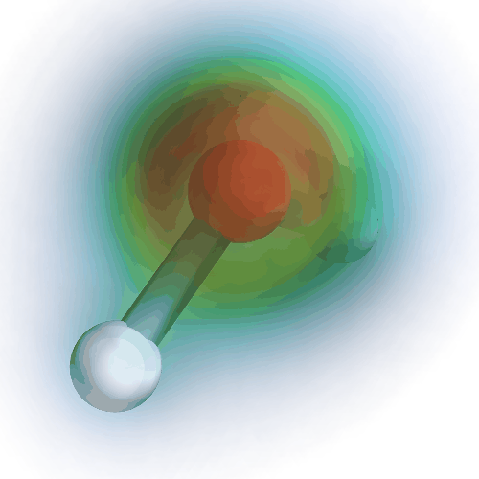DiffiQult¶
DiffiQult is an open source autodifferentiable quantum chemistry package.
You can find the code here.
Method:
- RHF
Features:
- Single point calculations
- Energy gradients with respect to any parameter of the one-particle basis functions.
- Energy optimization with respect of any parameter of the Gaussian basis functions.
Getting started with DiffiQult¶
Requirements¶
Numpy
- Algopy
Official releases and installation:
Available at: http://pypi.python.org/pypi/algopy
pip install algopy
Python 2.7 (so far tested).
Installation¶
From source:
git clone https://github.com/ttamayo/DiffiQult.gitpython setup.py install
Usage¶
Molecular system¶
We define the parameters of a molecular systems with an System_mol object:
- molecular geometry in xyz format and atomic units
- basis sets (data base so far sto_3G
- number of electrons
For example:
# Basis set is sto_3G
from diffiqult.Basis import basis_set_3G_STO as basis
# Our molecule H_2
d = -1.64601435
mol = [(1,(0.0,0.0,0.20165898)),(1,(0.0,0.0,d))]
# Number of electrons
ne = 2
system = System_mol(mol, ## Geometry
basis, ## Basis set (if shifted it should have the coordinates too)
ne, ## Number of electrons
shifted=False, ## If the basis is going to be on the atoms coordinates
mol_name='agua') ## Units -> Bohr
Tasks¶
The jobs in Diffiqult are managed by a Tasks object,
manager = Tasks(system,
name='h2_sto_3g', ## Prefix for all optput files
verbose=True) ## If there is going to be an output
where we defined the molecular system to
optimize with the object system, and output options with verbose.
The class Task contains the method Tasks.runtask, it computes one the following options:
| Task | Key | Description |
|---|---|---|
| Single point energies | Energy |
It calculates the RHF energy and updates some attibute in system |
| Optimization | Opt |
It optimizes a given parameter and updates the basis set in system |
Single point calculation¶
manager.runtask('Energy',
max_scf=50, # Maximum number of SCF cycles
printcoef=True, # This will produce a npy file with the molecular coefficients
name='Output.molden', # Name of the output file (Compatible with molden)
output=True)
Notes:
- We currently don’t have convergence options for the SCF.
- The molden file also contains an input section that can be used as input for system with the option
shifted - The geometry and MOs can be vizualized with molden,and the molden file.
Optimization¶
To optimize one or many input parameters, we use the option Opt. After a succesful optimization or
If the optimization reaches the maximum number of steps or convergence, it updates
the attributes of the system_mol object.
manager.runtask('Opt',
max_scf=50,
printcoef=False,
argnum=[2], # Optimization of centers
output=True) # We optimized all the steps
print(manager.syste.energy)
where argnum recieves a list with the parameters to optimize with the following convention:
| Parameter | argnum |
|---|---|
| Widths | 0 |
| Contraction coefficients | 1 |
| Gaussian centers | 2 |
for example, we can optimize the atomic centered basis function with respect of their widths and contraction coefficients in the following way.
manager.runtask('Opt',
max_scf=50,
printcoef=False,
argnum=[0,1], # Optimization of centers
output=True) # We print a molden file of all steps
Additionally, if output is set to True, a molden file of each optimization step is printed.
